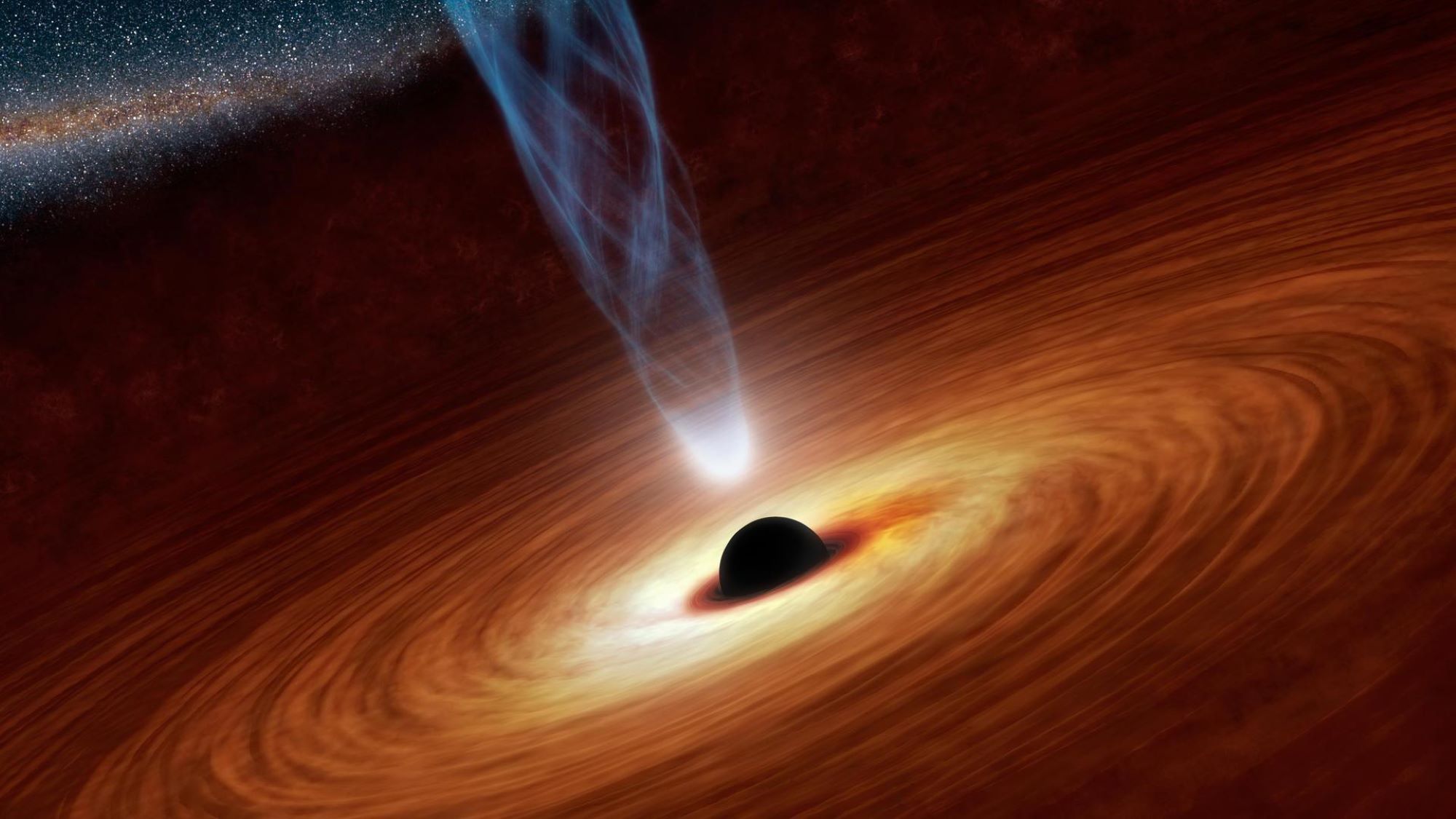

Humans might fear the nuclear bomb, but it is not even a blip against what the cosmos can unleash. Take, for example, the gamma ray burst: a stark flash of light and radiation erupting from a colossal star in its death throes. Earlier this year, astronomers spotted a gamma ray burst that they’ve labeled “the brightest of all time.”
Yet a gamma ray burst is only a single exploding star. When far more mass is involved, the universe can set off even larger bangs. In a paper published May 11 in the journal Monthly Notices of the Royal Astronomical Society, astronomers announced what, in their words, is the most energetic astronomical event ever seen.
Still ongoing, this event isn’t as bright as a gamma ray burst—but, lasting far longer, it has unleashed far more energy into the universe. Although this explosion, an event named AT2021lwx, defies easy explanation, the astronomers who found it have an idea involving lucky black holes. If they’re right, their observatories may have sighted something like this event more than once before.
In a bit of irony, this “largest explosion ever seen” evaded astronomers’ detection for nearly a year. The Samuel Oschin Telescope, nestled at Palomar Observatory in the mountains northeast of San Diego, California, first picked up a brightening blip in June 2020. But as often happens in astronomy, a field inundated with data from a sky constantly bursting with activity, the event remained unnoticed.
Only in April 2021 did an automated system called Lasair bring AT2021lwx to human astronomers’ attention. By then, the blip in the sky had been steadily brightening for more than 300 days. While the blip was peculiar, astronomers thought little of it, until they estimated the object’s brightness by calculating how far away the event was: 8 billion light-years.
“That’s, suddenly, when we realized: ‘Hang on, this is something very, very unusual,’” says study author Philip Wiseman, an astronomer at the University of Southampton in the UK.
[Related: Astronomers now know how supermassive black holes blast us with energy]
“I haven’t seen anything changing brightness and becoming this bright on such a short timescale,” says Tonima Ananna, a black hole astrophysicist at Dartmouth College, who wasn’t an author.
At first, the authors didn’t know what to make of AT2021lwx. They asked their colleagues. Some thought it was a tidal disruption event, where a black hole violently tears apart a captured star. But this event was far, far brighter than any known star-eating episode. Others thought it was a quasar, a young galaxy with an active nucleus: a supermassive black hole churning out bright jets of radiation. But this event’s hundredfold surge in brightness was far greater than anything astronomers had seen in quasars.
“You have the tidal disruption people saying, ‘No, I don’t think it’s one of ours.’ You’ve got the quasar people saying, ‘No, I don’t think it’s one of ours.’ That’s where you have to start coming up with a new scenario,” Wiseman says.
Their new scenario also involves a black hole: a supermassive one, more than a million times the mass of the sun, at the heart of a galaxy. Normally, a supermassive black hole is surrounded by a gas accretion disc, drawn in by the immense gravity. Some supermassive black holes, like those in quasars, actively devour that gas; as they do, they glow in response. Others, like the one in the center of the Milky Way, are dormant, quiet, and dark.
“You have the tidal disruption people saying, ‘No, I don’t think it’s one of ours.’ You’ve got the quasar people saying, ‘No, I don’t think it’s one of ours.’ That’s where you have to start coming up with a new scenario.”
Philip Wiseman, University of Southampton astronomer
Wiseman and his colleagues believe that, abruptly, a dormant black hole might suddenly find itself inundated by a very large quantity of gas—potentially thousands of times the mass of the sun. The black hole would respond to its newfound banquet by brilliantly awakening, bursting far more brightly than even an active counterpart..
Wiseman and his colleagues believe that such a windfall triggered AT2021lwx, causing a dormant supermassive black hole to light up the night.
“I think they make a compelling case that this is a supermassive black hole … suddenly being ‘switched on,’” says Ananna.
Astronomers might have seen accretion events like AT2021lwx before. Wiseman and his colleagues pored through past observations and found multiple needles in the haystack of astronomical data that resembled the record event. None of them were even close to this one’s brightness, but they also increased in luminosity along a similar pattern. These events occurred in galaxies known to have black holes at their centers, showering in streams of gas that fall inward.
[Related: Astronomers just caught a ‘micronova’—a small but mighty star explosion]
“There’s a chance that [the record event] is the same, but just the amount of gas that has been dumped on is much, much, much, much larger,” says Wiseman.
Wiseman and his colleagues plan to put their ideas to the test in the form of computer simulations. By doing this, they can learn if accretion events could have caused this record explosion and the other bright patterns they’d found.
Meanwhile, they’re planning to follow the trail they’ve found. AT2021lwx’s brightness has peaked and begun to steadily decline. They’ve begun watching the object’s X-ray emissions and plan to follow up with radio waves. Once the object has faded to black, they plan to zoom in with something like the Hubble Space Telescope, which can see if there’s a galaxy behind the burst—and what it looks like.
The need for more observations underscores that astronomers still have many unanswered questions about some of the universe’s most extreme events.
“There may be things out there already that have been larger and brighter, but because they are so slow, our detection algorithms never actually flagged them as being an explosion themselves—and they kind of just got lost,” Wiseman says.